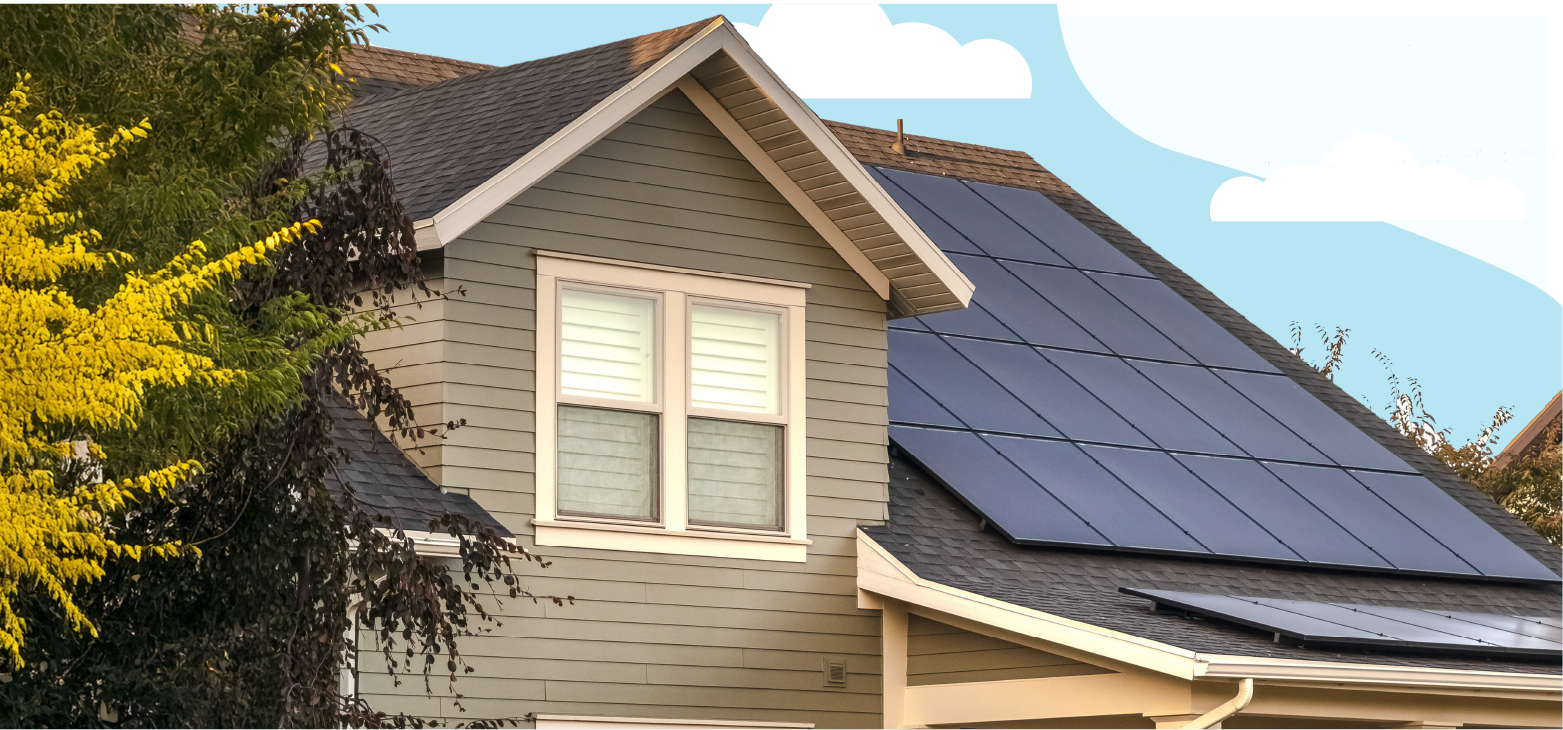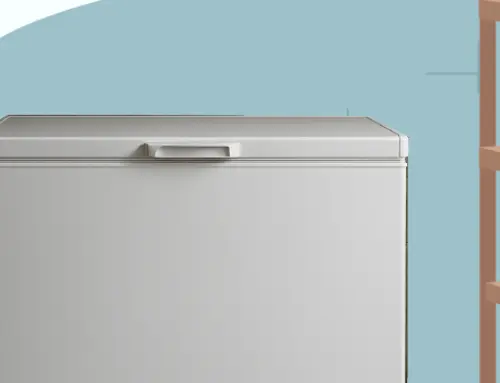Illinois Net Metering in 2025: What To Know
by Tyler Castle
15.9 min read

Illinois has been a leader in supporting solar energy adoption through policies like net metering, which allows homeowners and businesses with solar panels to earn bill credits for the full cost of electricity they send back to the grid. For years, this policy has helped make going solar more affordable and rewarding across the state.
But 2025 has marked a major turning point in Illinois' solar energy landscape. This new system is already changing how solar owners are credited for the energy they send back to the grid, how much they save, and what the long-term return on investment looks like for going solar today. In this guide, we break down the changes in Illinois net metering and what's in it for you.
What is the Difference Between Net Billing vs Net Metering?
Net billing is a billing structure for solar customers where the electricity you consume from the grid (for example $0.10 per kWh) and the electricity you send back to the grid (for example, $0.07 per kWh) are valued differently. Instead of getting full retail credit (so $0.10, like you would under net metering), net billing gives you credit only for the supply portion of the electricity you export to the grid (so only $0.07 per kWh). But when you draw electricity from the grid, you buy what you use at the full retail rate, which consists of supply and delivery charges.
On the other hand, net metering is a 1:1 ratio billing system that compensates end-use customers for energy they send back to the grid at the full retail rate they are charged for consuming it from the grid.
Advantages of Net Metering
Not all homes can immediately sign up for an Illinois net metering program. It takes time, equipment, money, and inspections to qualify, so it’s likely net metering is not for everyone. But to help you decide if it’s right for you and your Illinois home, here are some of the best advantages you should know:
- There’s Potential Cost Savings: Net metering allows solar panel owners to offset their electricity bills by receiving credits for excess energy sent back to the grid. This mechanism can lead to savings over time.
- Accelerated Return on Investment: By reducing monthly utility expenses, net metering shortens the payback period for solar installations, making solar energy a more attractive investment.
- Grid Support and Reduced Infrastructure Costs: Excess solar energy fed into the grid can alleviate demand during peak hours, potentially reducing the need for utilities to invest in additional infrastructure.
- Environmental Benefits: Promoting the use of renewable energy sources like solar power through net metering contributes to reduced greenhouse gas emissions and a smaller carbon footprint.
- Job Creation and Economic Growth: Net metering policies have been linked to increased demand for solar installations, thereby creating jobs in the renewable energy sector.
Disadvantages of Net Metering
Like anything else, there’s always disadvantages to different projects one chooses to take on and net metering is no different. If you’re still deciding for yourself, here are some of the top disadvantages of net metering:
- Cost Shifting Concerns: Critics argue that net metering can lead to higher costs for non-solar customers, because utilities have to recover fixed grid maintenance costs from a smaller customer base.
- Variable Compensation Rates: The value of credits received for excess energy can vary, and in some cases, may not fully compensate solar owners for the energy they contribute to the grid. (This would technically be net billing, but it is used interchangeably with net metering sometimes.)
- Dependence on Grid Connectivity: Net metering requires a connection to the utility grid; therefore, it doesn’t benefit those who are off-grid or in areas without net metering policies.
- Policy Uncertainty: Changes in net metering policies, such as adjustments to credit rates or eligibility criteria, can impact the financial viability of existing and future solar investments.
- Limited Incentive for Energy Storage: Since net metering allows for excess energy to be credited, there may be less motivation for solar owners to invest in battery storage solutions, which can be crucial during grid outages.
- Compatibility with Competitive Suppliers: In some regions, customers enrolled in net metering programs may not be able to choose a competitive energy supplier or apply net metering credits to a plan with a competitive supplier. It’s important to check local policies and provider guidelines to understand how these programs interact.
Illinois Net Metering Changes in 2025
Things have changed in Illinois since January 1, 2025. If you have solar panels in your home or business, you’re part of an Illinois net metering program. Now, under a system called Smart Solar Billing, you will receive credits for the electricity you export to the grid, but the credits will only be for the energy supply value of your energy—not to delivery charges or other fees. Thus, this will be more similar to net billing. However, the new policy creates a lump sum rebate for customers, taking into account the benefit that distributed generation can offer to the grid.
Below is more information about the Illinois net metering changes in 2025:
If you’re an existing customer, the updated net metering system—Smart Solar Billing—only affects new customers who installed their solar panel system after 5:00 PM on December 31, 2024. If you’ve already installed your system and submitted all required paperwork by then, you’ll remain under the original full retail credit structure. This applies to the first 30-year life of their generator, provided no significant modifications are made to the system. As an added benefit, Excess net metering credits will now roll over indefinitely, eliminating the previous annual reset.
New solar customers will receive net metering credits solely for the supply portion of their electricity bills and credits will no longer apply to delivery charges, taxes, or other fees.
To offset the reduced crediting benefits, a one-time rebate of $300 per kilowatt (kW) of installed solar capacity is available for systems equipped with smart inverters. An additional rebate of $300 per kilowatt-hour (kWh) is offered for battery storage installations for new customers setting up solar systems for the first time.
Why is Net Metering Changing?
Illinois has seen a jump in solar panel installations over the last few years. As more homes and businesses started generating their own electricity, the state hit a point where it needed to change how solar customers are credited.
This change was planned years ago in a law called the Future Energy Jobs Act of 2016. It said that once solar power made up about 5% of the state’s electricity use, the full credit system—called net metering—would begin to phase out.
Utility companies wanted these changes to happen sooner, saying full credits put create extra costs for customers who don’t have solar. But groups like the Citizens Utility Board (CUB) pushed back and helped delay the change until 2025 to give people more time to benefit from solar.
Is Net Metering Going Away in Illinois?
No, net metering is not being eliminated in Illinois, but it has changed as of January 1, 2025. Under the Climate and Equitable Jobs Act (CEJA), Illinois has transitioned from full retail net metering to a supply-only credit system for new solar customers. This means that while net metering remains available, the way credits are applied has been adjusted.
Existing customers retain their full retail credits, but new customers will experience a different credit structure. These changes aim to balance the growth of solar energy with the evolving dynamics of the state’s energy grid.
What Type of Systems in Illinois Qualify for Net Metering?
Under Illinois law, to qualify for net metering your renewable energy system must have a capacity of 2,000 kW or less. Next, your system must be located on the customer’s premises and used to offset their own electricity usage.
Systems powered by Solar photovoltaic (PV) systems, wind turbines or systems, dedicated crops grown for electricity generation, anaerobic digestion of livestock or food-processing waste, fuel cells or microturbines powered by renewable fuels, hydroelectric energy are eligible for Illinois net metering.
It’s important to note that systems must comply with interconnection standards set by the utility and may require the installation of a smart inverter to be eligible for certain rebates.
What Is Interconnection?
When you apply for net metering in Illinois, you also need to apply for interconnection—this is the process of getting official permission to connect your renewable energy system, like solar panels, to the electric utility’s grid.
Interconnection ensures that your system can safely and reliably send power to and from the grid without causing harm or disruption to the utility’s infrastructure. It involves a technical review by the utility company and sometimes requires inspections or specific equipment—especially for larger systems.
Here’s how it works:
If you’re installing a typical residential solar system, your solar installer will usually take care of both the net metering and interconnection applications for you. They’ll handle all the paperwork, technical specs, and communication with your utility provider. If you’re installing something different—like wind turbines, anaerobic digesters, or a commercial-scale setup—be sure to ask your installer or contractor if they’ll also manage the interconnection process. Not all companies do this automatically, and missing this step can delay your ability to start earning energy credits.
You cannot start sending electricity to the grid until the utility approves your interconnection application. Once approved, your system can be connected, and you’ll begin receiving credits through the net billing process (or net metering, if you were grandfathered in before 2025).
Illinois utilities (like ComEd, Ameren, and MidAmerican) each have slightly different interconnection guidelines and timelines, so it’s important to make sure everything is submitted accurately and early in the process.
How Do I Apply for the ComEd Net Metering Program?
Before you decide whether a net metering program in Illinois is right for you, one of the most crucial steps to start selling off your excess energy is to pair up with a local utility. You got to have someone to give your energy to, right? ComEd, an electricity utility, comes with a simple way to enroll and to start earning credit for your energy. Here’s what you need to know about the ComEd net metering program:
First, your solar system must meet their eligibility requirements. To qualify for ComEd net metering, your electric generator must be located on your premises. These systems include photovoltaic, wind, dedicated crops grown for electricity generation, anaerobic digestion of livestock or food processing waste, or microturbines.
If your system meets these parameters, here’s how to apply for the official ComEd Net Metering Program:
- Complete the Interconnection Application: This application includes Net Metering and can be completed online at ComEd’s Contractor Connect.
- Receive Approval: After submitting your application, you will receive approval and a signed Certificate of Completion from ComEd confirming your system has permission to operate.
- Automatic Enrollment: Once approved, you will automatically start participating in Net Metering.
Note that if you need to at any time, you can switch to an energy supplier and still remain within the net metering program without needing to reapply.
With the ComEd net metering program, you are charged only for the net amount of energy you use during each billing period (i.e., your supply charge) minus the excess amount you send back to the smart grid). And, if you send more energy to the grid than ComEd delivers, you can receive credits on your bill.
For customers interconnecting starting January 1, 2025, or later, new net metering customers are eligible to receive credits that offset charges in the supply section of the bill.
How Do Illinois Net Metering Credits Reduce Your Utility Bill?
Illinois net metering credits can benefit your electricity bill in a positive way. When you have solar panels in your house, they sometimes make more electricity than you use. If you’re enrolled in a net metering program, that extra power can go back to the electric grid where electricity companies give you credits on your bill.
The money you save from your solar credits can be used to help pay for the part of your monthly electricity bill that covers the electricity itself (called the supply charge). Keep in mind that these credits cannot be applied to help with covering your fees for delivery or other extra charges on your bill.
It’s helpful to know that if you earn more credits than you can use in one month, don’t worry—they roll over to the next month. You can keep using them later, and they won’t expire.
What Are the Benefits of the Illinois Shines Program?
The Illinois Shines Program, officially known as the Adjustable Block Program, is a state-administered solar incentive initiative managed by the Illinois Power Agency (IPA). Its primary goal is to promote the development of solar energy projects across Illinois, thereby supporting the state’s ambitious renewable energy targets:
- Achieving 40% renewable energy by 2030
- Reaching 50% renewable energy by 2040
- Attaining 100% clean energy by 2050
If you’re interested in supporting state-wide renewable energy goals in your own backyard but don’t have the funds, here’s what the Illinois Shines Program can do for you:
Through this program participants receive financial benefits through the sale of Renewable Energy Credits (RECs). For every megawatt-hour of electricity generated by a solar system, one REC is produced. These RECs are purchased by utilities, providing a revenue stream that can offset installation and operational costs. Individuals and businesses can install solar panels on their properties to generate their own electricity and benefit from this program. Alternatively, for those unable to install solar panels, subscribing to a community solar project allows them to benefit from solar energy without on-site installations.
The program also emphasizes equitable access by supporting Equity Eligible Contractors (EECs) and ensuring that underserved communities benefit from clean energy initiatives. As an added benefit, Illinois Shines enforces strict consumer protection standards, requiring transparency from solar vendors and providing resources to assist consumers in making informed decisions.
For more detailed information and resources, visit the Illinois Shines FAQ page.
Alternatives to Net Metering in Illinois
With the rollout of Smart Solar Billing, the economics of going solar in Illinois have changed. This change reduces the overall value of the credits and may extend the time it takes for homeowners to recover their solar investment.
If you’re reconsidering whether installing solar panels is right for you, you’re not alone. Many Illinois residents are now exploring other ways to support renewable energy—without the upfront cost or long-term maintenance of solar panels. One great alternative is our Earth-Friendly Electricity Plan.
Santanna does not have the ability to provide bill credits for solar customers (neither Net Billing nor Net Metering). Customers must be enrolled with their electric utility like ComEd to realize those benefits, especially the new rebate.
So, while switching to Santanna Energy Services won’t earn you bill credits like net metering/billing does, Santanna offers Earth-Friendly electric plans that support renewable energy generation because we match your electricity usage with the purchase of Renewable Energy Credits (RECs). It’s a simple way to support renewable energy growth—without any equipment or installation required. Explore our Earth-Friendly plans here and take a step toward a cleaner and sustainable Illinois.
For an added bonus, when you enroll in a Santanna Earth Friendly energy plan you can help contribute to reforestation efforts across the U.S. For every Earth-Friendly gas or electricity plan purchased, trees will be planted* in the United States. Learn more about this benefit here!
FAQs
What is the deadline to get net metering in Illinois?
The deadline to qualify for the previous full retail rate net metering was December 31, 2024. Systems that were fully installed, inspected, and had all necessary documentation submitted to the utility by this date are “grandfathered” into the old net metering program, receiving credits for supply, delivery, and other charges.
For systems installed and interconnected on or after January 1, 2025, the new Smart Solar Billing applies, providing credits only for the supply portion of the bill.
How do I know if I have full retail rate net metering?
If you’re a homeowner or small business connected to Ameren or ComEd and your solar system was up and running before January 1, 2025—and you didn’t take the one-time Distributed Generation Rebate—you’re locked into full retail net metering for as long as your system lasts, unless you make major changes to it.
If unsure, it’s a good idea to call your utility provider and double-check.
Is the Community Solar Program impacted by net metering change in Illinois?
Not at all. If you’re part of Illinois’ Community Solar program, you don’t need to worry about these changes. This program lets you enjoy the benefits of solar energy without putting panels on your roof. Instead, you subscribe to a share of a larger solar farm somewhere else, and you get credits on your electric bill based on how much energy your share produces. The new net metering policy doesn’t affect how Community Solar works.
Will net metering change if I already have solar panels?
If your solar system was interconnected and approved before December 31, 2024, you are considered a “legacy” customer and will continue to receive full retail rate net metering benefits for the lifetime of your system (up to 30 years).
Note: Significant modifications to your system, such as increasing its capacity, may affect your eligibility for legacy net metering benefits.
What if I don’t have solar panels? Can I still participate in net metering?
If you don’t currently have solar panels, you can’t participate in full retail net metering, but you can still participate in Smart Solar Billing. You can also support renewable energy and take control of your electricity costs with an alternative plan option for your electricity. With Santanna’s Earth-Friendly Electricity plan, 100% of your electricity usage is matched with Renewable Energy Credits—so you’re helping the planet without installing a single panel.
As Illinois transitions into the next era of solar energy policy with Smart Solar Billing, it’s more important than ever to stay informed. While the full retail net metering benefit has ended for new solar customers as of January 1, 2025, solar energy remains a smart and sustainable investment—especially with state rebates, indefinite credit rollovers, and ongoing support through programs like Illinois Shines.
Whether you’re a homeowner, business, or solar professional, understanding how these changes affect billing, credits, and long-term savings will help you make confident energy decisions.
At Santanna Energy Services, we offer a variety of electricity and natural gas plans designed to give you long-term value and protection from unexpected energy prices. Whether you have solar or not, we’re here to help you power your home with confidence. Explore our plans here.
* Santanna Energy Services (Santanna) works in partnership with One Tree Planted. For every residential Earth-Friendly Santanna gas or electricity initial enrollment or renewal, Santanna, via its One Tree Planted partnership, will plant trees after 60 days of billed usage. Plans may vary. See plan details for eligibility and current tree-planting promotions.
Tyler is an experienced energy professional, having worked for Santanna Energy Services, for the past four years. He is passionate about renewable energy and believes that diversifying the energy grid is the key to a sustainable future. Tyler is dedicated to supplying consumers with the best possible energy solutions and works diligently to make sure that Santanna can deliver the highest quality service.







